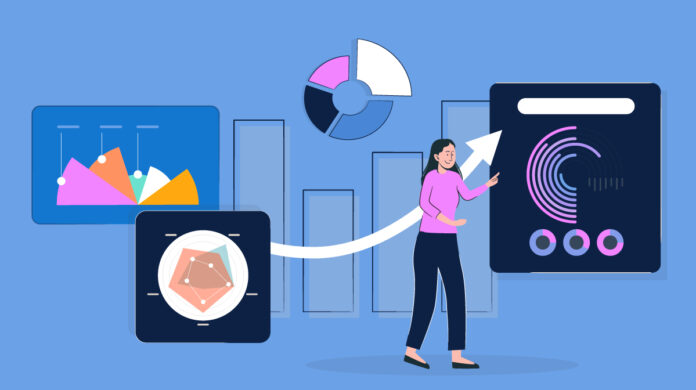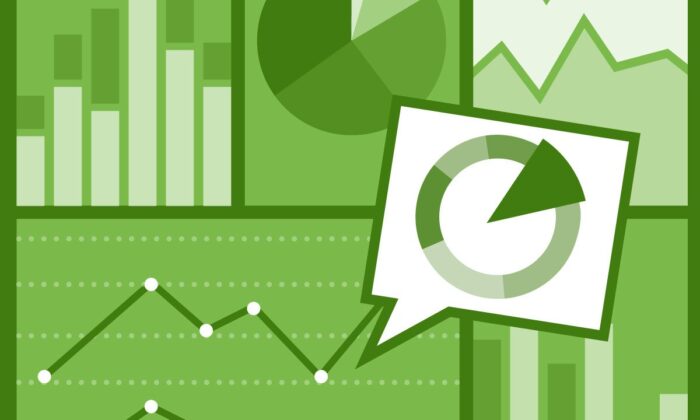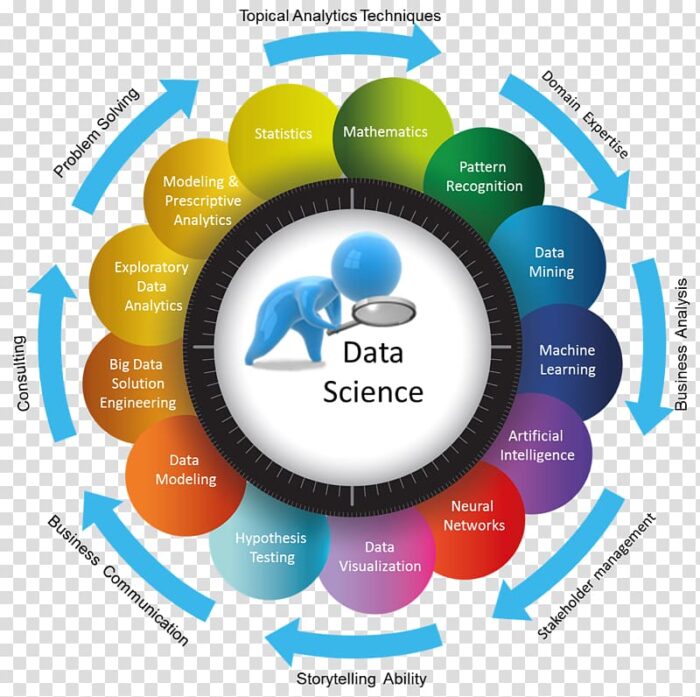
Data visualization and analytics are becoming increasingly important elements in business communication. They can help companies more effectively communicate their message, explain data more clearly, and enhance the overall presentation of key information.
Data visualization is an important tool for business communication because it allows complex data to be presented in a clear and concise way. By transforming data into visual representations, businesses can communicate their findings, trends, and insights to stakeholders more effectively. Here are some ways data visualization can be used in business communication:
Presenting financial data: Financial data can be complex and difficult to interpret, but by using graphs, charts, and tables, businesses can make this data more accessible and understandable to stakeholders.
Identifying trends: By visualizing data over time, businesses can identify trends and patterns that are not immediately apparent in spreadsheets or raw data.
Communicating insights: Data visualization can help businesses communicate insights and findings more effectively, especially when presenting to a non-technical audience.
Comparing data: By using visual aids to compare data, businesses can highlight differences and similarities between different sets of data, making it easier to draw conclusions and make informed decisions.
Creating dashboards: Dashboards are a collection of visualizations that can provide an overview of key metrics, allowing businesses to monitor performance and identify areas that need improvement.
Overall, data visualization is an essential tool for effective business communication. It allows businesses to communicate complex data in a clear and concise way, which can help stakeholders make informed decisions and drive business success.
Additionally, using analytics to support decisions provides a greater level of confidence for decision-makers. In this article, we will explore how companies can use data visualizations and analytics within their communication strategies to make their presentations more effective and engaging.
Read more about the most important types of graphs and charts in this blog post from datapine.
1. Presenting results of customer surveys

Analytics and data visualization can be used to accurately convey the results of customer surveys, providing a clear snapshot of the feedback that has been received. This allows businesses to make more informed decisions based on hard data rather than relying on subjective interpretation.
2. Making predictions
Data visualization can be used to create predictive models and forecasts, projecting future trends based on historical information. This allows businesses to anticipate what is likely to happen, allowing them to plan ahead and adjust their strategies accordingly.
Detecting correlations: Analyzing vast amounts of data can reveal patterns and correlations that are not immediately obvious. This can help businesses identify opportunities for growth or areas that need improvement, allowing them to adapt accordingly.
3. Tracking performance metrics
Businesses use analytics and data visualization tools to track key performance metrics such as sales figures, customer retention rates, website visits etc., helping them measure their progress against set targets and objectives.
4. Identifying customer personas
Through analyzing customer data such as demographics or purchase behavior, businesses can gain insights into who their customers are and what they want – allowing them to tailor their services accordingly and create targeted marketing campaigns that will resonate with the right people at the right time.
Here are some ways to use data visualization for this purpose:
Analyzing demographics: By using data visualization techniques such as bar charts, scatter plots, and heat maps, businesses can identify patterns in customer demographics such as age, gender, income, and location.
Identifying interests and behaviors: By analyzing customer behavior data such as search history, purchase history, and social media interactions, businesses can identify common interests and behaviors among customers. This information can be visualized using tools such as network diagrams and cluster analysis.
Visualizing customer journeys: Customer journey mapping is a popular technique for understanding how customers interact with a business. By visualizing this journey, businesses can identify pain points and opportunities to improve the customer experience.
Creating personas: Once businesses have collected and analyzed customer data, they can use this information to create customer personas. These personas can be visualized using tools such as infographics or charts to help stakeholders better understand the needs and motivations of different customer segments.
5. Generating reports

Data visualization provides an effective way of presenting complex information in a visually appealing format that is easy for people to understand at a glance – making it ideal for generating reports which present findings in an accessible way for stakeholders who may not have a technical background in the subject matter involved.
6. Understanding trends
By visualizing large datasets, it is possible to identify trends over time – this could be anything from macro-level economic trends through to usage patterns within a particular product or service – helping businesses spot opportunities early before their competitors do so as well as adjusting their strategies where necessary in order to stay ahead of the curve.
7. Comparing different variables
Analyzing multiple variables simultaneously makes it easier for businesses to study how they interact with one another – allowing them to see how changes in one area affect another, giving them greater insight into how best to make informed decisions informed by clear evidence rather than guesswork alone — once again helping them stay ahead of the competition by being more agile when responding both current situations as well as predicting future scenarios accurately too.
8. Answering questions quickly

Data visualization enables decision makers quickly look up answers from large datasets within seconds rather than having manually go through pages upon pages of tables which would take much longer — therefore giving teams greater confidence when communicating results due to being able present facts clearly without any ambiguity; something which will always take priority when speaking with stakeholders or customers alike.
9. Enhancing presentations/pitches
Visuals are often much more powerful than words alone when trying to communicate ideas effectively; using analytics and data visualization allows business professionals to deliver engaging presentations by supplementing core points with engaging visuals, which will further enhance their message in turn making it even more memorable overall.
















